Cages for cockatiels: design, arrangement, installation and care
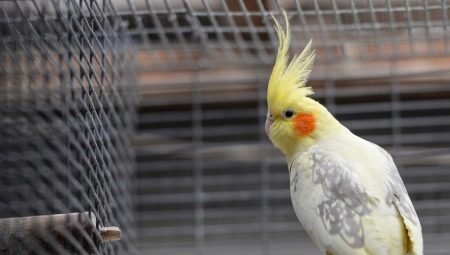
Corella is an amazing bird of the cockatoo family, which is native to Australia. The feathered one has a kind disposition, sedateness, extraordinary affection for people and longevity. Corellas do not tolerate fuss, they are playful, quick-witted. Therefore, the cockatoo cage must be appropriate. Before purchasing a product, you need to consider where it will stand, whether an additional light source is needed, whether the interior surrounding it will be safe and much more.
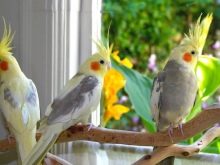

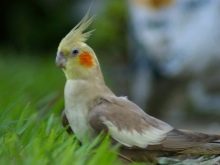
Design features
To avoid any injuries, you need the largest possible cage. If space is limited, the pet will become indifferent, he will develop apathy. When depression begins in a bird, problems with the body are possible, and the bird may die. Therefore, you need to select a cage, knowing all the recommendations of a specialist. Corella has a wingspan of about 31 cm, so the width of the cage should be about 62 cm. The parrot loves to hang on the cage with its tail up, which means the height of the cage should be 61 cm.
But it should also be normal length of the dwelling, so that the corella can move freely inside the cage without touching the walls.
If the bird lives in close quarters, it will receive damage, obesity and mental illness.
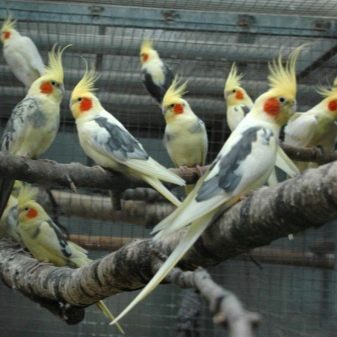
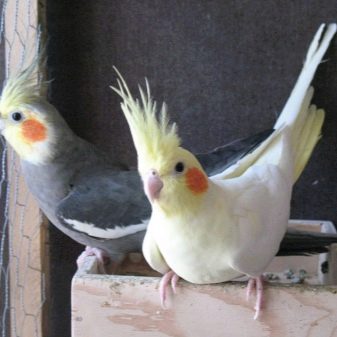
The form
Currently, there are various forms of cells: diamond-shaped, oval, square. You need to provide your pet with comfort. A cage with a cylindrical shape will look beautiful. But such a cage has a minus - it has no corners, and because of this, the parrot may feel uncomfortable. If the parrot moves around the round cage, it will slide down everywhere. The best, most successful and comfortable option is a rectangular cage. This option has an oblong shape, there are corners, and the top cover is flat.
For Corell, comfortable conditions - an abundance of corners, an oblong shape, a flat roof top, which will serve as an additional playground for games.

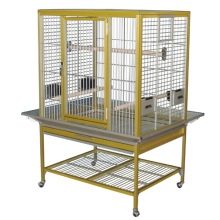
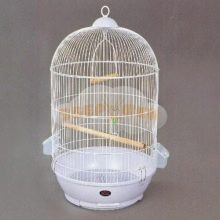
Dimensions (edit)
There are no exact dimensions. But there are small cages that are designed for one parrot: length is not less than 82 centimeters, width is about 42 centimeters, height is about 62 centimeters. Corella needs to be kept not only in a cage, but also to allow the pet to walk around the room so that the freedom-loving bird enjoys free soaring. An important element of the cage is the width of the rods. The distance between the rods should be about 2 or 3 centimeters.
If the distance is large, and the parrot decides to get out, then his head will get stuck. If the rods have a distance of less than two centimeters, then the parrot will feel uncomfortable.
An important element is the wicker walls of the cage. If the weave is vertical, the parrot will always slide.
An excellent option is the horizontal position of the rods. But lattice walls are considered the most useful option.
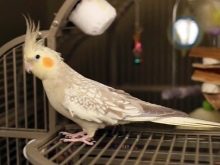
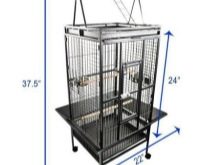
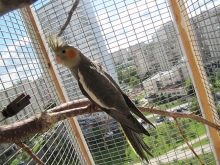
Materials (edit)
Corella has a powerful beak. And the bird is incredibly curious, so it loves to gnaw everything that it gets. For this reason, when choosing a cage for a parrot, you must first study the material from which it is made. The material must be safe and environmentally friendly for the life of the pet. The cage must be strong so that the parrot does not crawl out of it. Dyed products or cages made of zinc and copper are strictly forbidden to buy. Small crumbs of zinc, paint, sour copper can cause poisoning in cockatiels.
A tree cannot be used as a cage, as its parts will be difficult to wash and clean. The tree can swell from water and lose its original appearance. And in the cracks that appear, dangerous pests will start. The best material is stainless steel. Its surface should be uniform, smooth without roughness. The cage itself should not have too sharp corners, internal metal reinforcements.
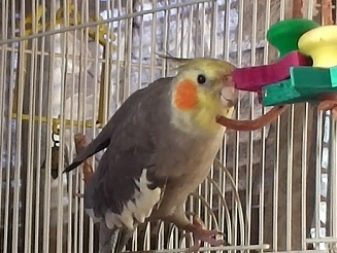
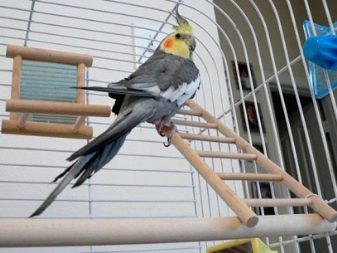
Homemade options
An excellent cockatiel cage will not come cheap. But if you have patience and some skills, it is possible to make your own parrot cage.
To make a cage with your own hands, you will need some elements:
- jigsaw, electric saw or slicing machine;
- drill;
- drill;
- screwdriver;
- screws;
- roulette;
- a sheet of paper for making a diagram;
- pen or pencil;
- pliers;
- nails;
- piano furniture hinges made of stainless steel;
- hammer;
- glue;
- nippers;
- construction stapler;
- sandpaper.
Only a plastic pallet is available at the pet store.
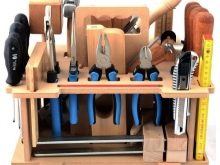
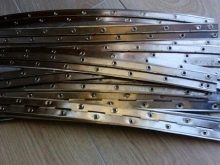
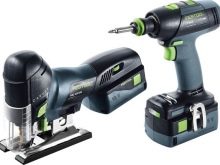
Consider the manufacturing process.
- You must start with the blueprints for the cage. On paper, you need to determine the dimensions of the elements of the cage - the pallet, walls, roof. If you already have a pallet, then you do not need to do it. Using a jigsaw and an electric saw, you need to cut out a rectangle from plywood, three edge elements of the pallet (1 extended and 2 shortened, having a width of 11 cm). You need to cut three slats to install the mesh; the strips must be the same length as the sides; the height should be about 3 cm.
- The side bar has the smallest width compared to the other three. The small width will allow you to quickly and easily clean the cage. With the help of glue, you need to fasten the base of the pallet with three sides. On each inner side of the side, you need to glue a strip to install the net.
- Now you need to cut the racks that are on the sides. This requires 8 boards that are about 7 centimeters wide. Next, you need to glue the racks in pairs. Using nippers, it is necessary to cut 4 walls from the mesh. Using a pencil, mark the holes on the walls. Use a drill to drill holes.
- On both sides, you need to insert the mesh rods into the holes.The side walls must be glued to the base of the pallet. Using a hammer and nails, nail 2 horizontal planks to the top of the long walls. The ends of the mesh should remain outside.
- Now you need to nail the 4th side of the pallet so that its top coincides with the other three sides. The bottom should be 4 cm above the bottom (using this slot, debris can be removed from the cage).
- Using horizontal strips, side walls must be fixed from the outside of the pallet. You need to insert the 2 remaining parts of the net (short walls of the parrot's dwelling). Using nails, you need to secure the mesh from the inside of the cage with side strips.
- Now you need to decorate the ceiling. It is necessary to bend the protruding edges of the walls of the net to the sides. Using a construction stapler, they need to be fixed to horizontal strips. The wall must be nailed to the side ceiling strips.
- The top door can now be made. Using nippers, you need to cut out a piece of mesh and use a stapler to attach its ends to two wooden planks. A furniture hinge must be attached to one plank. Using a screwdriver, you need to fix the second half of the hinge to the prepared opening on the ceiling of the cage in order to install the door.
- The second part of the ceiling must be covered with a mesh. Using the door on the roof of the cage, a person can change the perches or other things that are inside.
- For the parrot, you need to install a door on the wall. The door can be made from mesh. On the wall of the cage, you need to cut a hole and insert doors for the parrot there. This door is easier to secure if you make hinges from the wire mesh and fold them over.
- A pallet can be made. You can take a sheet of fiberboard and fix a transverse bar on one side of it. This bar will be able to close the bottom slot, and the corella will not be able to get out.
If everything is done well, the cage will be reliable. The feathered one will feel the care of the owner.
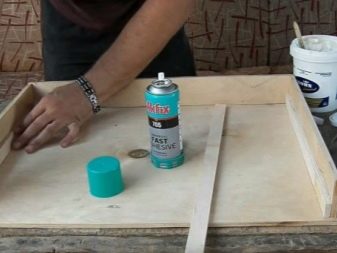



How to equip?
If the owner of the cockatiel cannot sit next to his pet all the time, then you need to think about arranging a parrot's cage. The necessary items are a drinker and a feeder. To prevent the water from drying out and getting dirty with garbage, you need to purchase an automatic drinker made of plastic or organic glass. These containers help the liquid to maintain its freshness. If you use open drinkers, then you need to change the liquid daily.
The liquid should be at room temperature, if the water is cold, then the parrot will have indigestion, and the warm liquid will not be able to quench his thirst... You can not use tap liquid, it is better to use purified water. Feeders are best purchased wide, deep and smooth. The feeder should be made of materials such as plastic, plastic, porcelain or ceramic. You do not need to purchase earthenware and wooden dishes, because they will not cleanse.

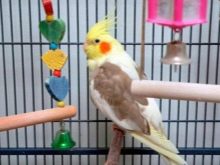

It is necessary to purchase a bath so that the parrot can swim. But you don't always need to keep the tub in a cage. For the most part, birds love to swim when it's hot. As soon as the cockatiel has finished the water procedures, it is necessary to remove the bath so that the parrot does not drink from it. Perches and perches must be present in the cage. They should be placed at different heights. Perches should be made of soft wood. You can equip the cage with soft rope ropes. The perches should be of different thicknesses for excellent gymnastics for the cockatiel paws.
The perches should be well reinforced so that the cockatiel does not hurt its wings and tail when rocking. Perches are a consumable item, the cockatiel can nibble on them, and this is beneficial for poultry digestion. Parrots sometimes lack calcium, so inside the cage there should always be chalk, which must be purchased in a special store.
You can place various toys inside the cage, for example, a small mirror or a bell. But you don't need to get carried away too much, because the cockatiel needs space.
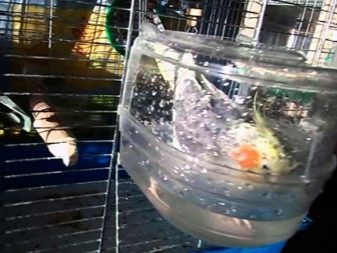
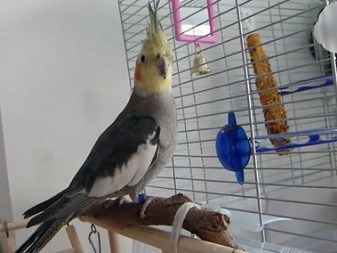
Where to install?
A house or apartment is not a natural habitat for cockatiels. And because of these conditions, the bird can lie in wait for various dangers. For this reason, it is necessary to select not only a good cage, but also to correctly determine the area where its location will be.
You cannot install the cage in distant rooms, that is, where people rarely visit. The kitchen always prepares food and there is a lot of steam - this place is dangerous for the cockatiel. Noisy rooms where electrical appliances are located is a bad place, as the cockatiel can get scared. You cannot install the cage where there is an effect of an electromagnet and radio waves (computers, routers, etc.).

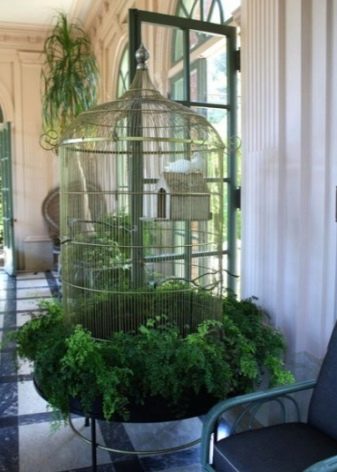
Places with heating devices are also dangerous for the cockatiel. The warm air will irritate the feathers of the parrot. The birds will be able to tolerate the cold air, but if there are drafts, then the cockatiel will hurt and may die. You cannot put the cage on the window sills, because in these places it is very cold in winter and very hot in summer. And if you open the window, then there will be a draft, or extraneous noise can frighten the cockatiel. According to the psychological characteristics, the corella should be on the same level with the face of a standing person. If the cockatiel is below a person, then the bird may feel depressed, and if it is higher, a feeling of dominance will appear.
Corella is a sociable bird, and she must observe the events taking place. The parrot cage does not need to be placed in the middle of the room. If both parts of the house are well pressed against the wall, then the parrot will feel safe, since he needs a protected corner.
Lighting should be balanced for the bird; it shouldn't be too bright.
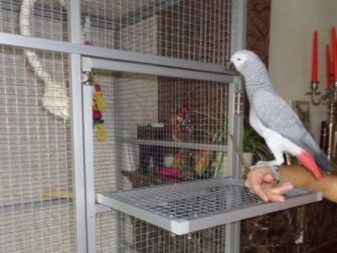
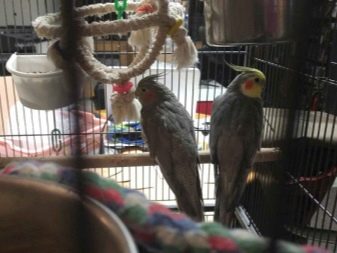
How to care for a cage?
Before settling a cockatiel in a cage, it is necessary to thoroughly disinfect the future home of the feathered. You can lightly scald the equipment with boiling water. You need to remove the cage twice in 14 days. Bowls and drinkers are always dirty with droppings or food debris. This can lead to mold and mildew. They will be able to provoke complications in the health of the bird: infectious diseases may appear, or the parrot may be poisoned. Therefore, you always need to ensure that all objects inside the cage are clean. There should be cleanliness around the parrot's dwelling too. It is impossible for the parrot to feel extraneous odors, this may cause skin irritation.
To easily clean all items, you need to purchase a structure that has one or two retractable plastic pallets. Do not forget to cover these pallets with clean paper. Thus, the cockatiel parrot is a quick-witted, cheerful bird, so it needs good care.
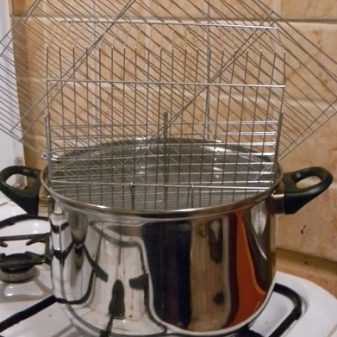
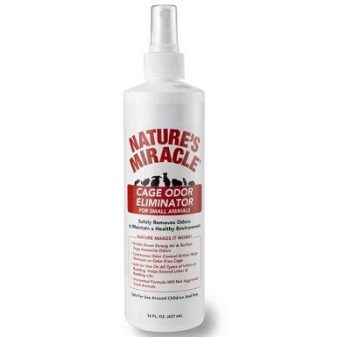
And the cage is of great importance for the bird. The parrot's dwelling must meet the needs of the bird itself.
For information on how to choose a cage and what should be inside, see the next video.








